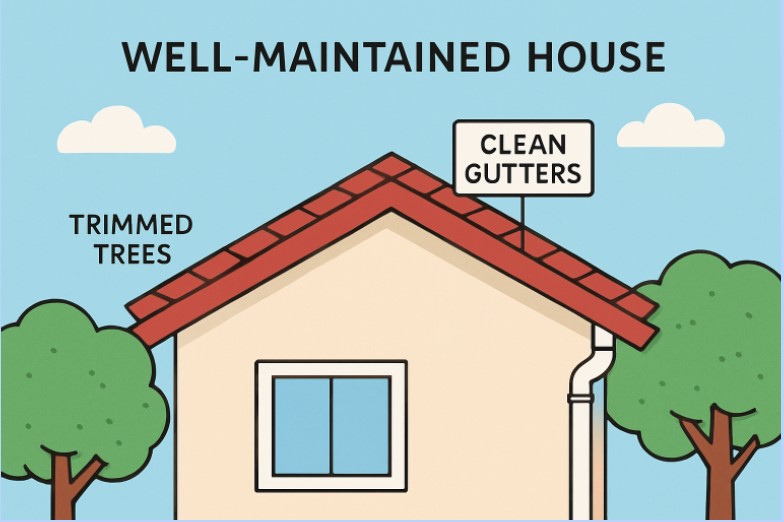Maintaining the roof over your home is one of the most important investments homeowners can make for long-term peace of mind. By developing and following a regular maintenance plan, you’ll preserve your roof’s integrity, safeguard your property from costly water damage, and extend the lifespan of your roofing system. When in doubt or if you discover damage beyond your expertise, consulting professional roof roofing companies St. Charles County, MO can provide reliable solutions and peace of mind that repairs are handled safely and efficiently.
To help you get started, here are the most essential strategies for roof upkeep, including seasonal advice and professional tips. With attention to detail and adherence to these guidelines, you can prevent many issues before they become expensive problems.
Regular Roof Inspections
Performing thorough roof inspections at least twice a year, preferably in spring and fall, lays the foundation for effective maintenance. After high winds or major storms, it’s prudent to inspect your roof for obvious issues, such as missing or cracked shingles, visible leaks, or sagging. Inspect all parts of the roof, including around chimneys, skylights, and flashing. As noted by This Old House, regular roof inspections can help uncover hidden damage before it worsens. Early detection of problems leads to more manageable and less costly repairs.
Cleaning Gutters and Downspouts
Unclogging gutters and downspouts is vital to prevent water from pooling on your roof and seeping into your home. When gutters become blocked by leaves, twigs, or debris, water cannot flow away properly, increasing the likelihood of leaks and foundation damage. Clean out gutters at least twice annually and after storms. Installing gutter guards is an effective way to minimize debris and reduce the frequency of cleaning, keeping your drainage system functional year-round.
Trimming Overhanging Tree Branches
Tree limbs that extend above your roof can scrape against shingles, drop leaves, and provide easy access for animals, all of which compromise your roof’s integrity. During severe weather, branches may break off and cause significant structural harm. Regularly prune back branches to at least six feet away from the roofline, significantly reducing the risk of damage and debris buildup. Keeping the area above and around the roof clear is a proactive way to maintain both roof and gutter health.
Addressing Moss and Algae Growth
Moss retains moisture, leading to shingle rot and deterioration over time. Algae growth, commonly seen as dark streaks, can also degrade roofing materials. In shady or humid areas, it’s essential to monitor for these issues. To deter growth, install zinc or copper strips at the ridge line—rainwater will carry particles down the roof, helping to inhibit the formation of moss and algae. If an infestation already exists, use cleaning agents designed for roofs, or contact professionals to ensure gentle removal.
Ensuring Proper Attic Ventilation and Insulation
Attic ventilation and insulation play a vital role in roof health. Without sufficient airflow, heat and moisture build up beneath your roof, leading to warped decking, higher cooling costs, and increased vulnerability to mold and ice dams. Inspect your attic for blocked vents, check insulation levels, and ensure air moves freely between intake and exhaust vents. According to The Spruce, understanding how attic ventilation works can help homeowners make informed decisions about upgrades that improve airflow and reduce long-term damage. Upgrading insulation and correcting ventilation issues are investments that pay off in improved home comfort, enhanced energy efficiency, and increased roof durability.
Promptly Addressing Repairs
Addressing minor issues early, no matter how small, can save you significant repair costs in the future. Even a single curled, cracked, or missing shingle can lead to water infiltration. Do not delay in replacing damaged materials or patching leaks; prompt attention prevents minor issues from developing into significant structural damage. For issues beyond your DIY skills, professional roofers have the expertise and equipment to ensure repairs are done safely and effectively.
Scheduling Professional Inspections
Although regular homeowner checks are essential, a yearly inspection by qualified roofing professionals delivers the thorough evaluation every roof needs. Experts can uncover hidden damage, recommend tailored solutions, and verify that all critical areas are in good condition. Consider scheduling this inspection for late spring or early summer, allowing you sufficient time to address any issues before unpredictable seasonal weather arrives.
Implementing Seasonal Maintenance
Each season presents unique challenges for your roof. In autumn, clear leaves and debris from gutters and inspect shingles before winter storms arrive. Winter demands vigilance against ice dams and snow buildup; prompt removal prevents water intrusion and excessive weight that strains the structure. Spring and summer are ideal times to repair any damage and prepare your roof for the heat, storms, or heavy rains that may come. Tailoring your approach to seasonal changes ensures your roof remains protected throughout the year. By applying these best practices, you’ll ensure that your roof—your home’s first defense against the elements—remains strong, secure, and efficient for many years to come.
